AustLit
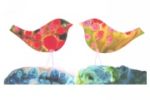
-
Manga is an increasingly popular format of text amongst children and young adults, and is progressively being introduced into classrooms and being taken up as an important area of research. Made available in bookstores and libraries in Australia since the early 1990s, it has existed as a form of Japanese comic for decades, and has been available in the United States since the 1970s (Bainbridge and Norris). Recently Madman Entertainment has moved into manga distribution in Australia, indicating its rise in popularity. There is an increasing number of translations of manga into other languages, as well as a rise in Original English Language (OEL) Manga.
Manga is generally described as 'Japanese comics', but should not be confused with the genre of anime. Toni Johnson-Woods defines manga as a "visual narrative with a recognisable 'sensibility'", further explaining that the vague nature of this definition is to "cover a multitude of options, and embraces the stereotypical big-eyed, pointy chinned characters that many people consider the epitome of manga" (2010, p.2). Manga generally follows the Japanese reading orientation of right to left, back to front. It includes a variety of drawing techniques, sometimes reflecting a particular genre of manga, shoju (girls' manga) or mecha (robot manga) for example, and often includes multiple frames of different shapes and sizes. Manga typically relies on visual cues, cinematic techniques (such as close-ups) and sound effects to enhance the story. Johnson-Woods describes the use of sound effects as 'quintessentially Japanese' because it "reflects the onomatopoeia of Japanese language." The Dreaming OEL series by Queenie Chan makes use of such sound effects and visual cues, as does the Hollow Fields series by award-winning Madeleine Rosca.
This Exhibition provides an introduction to children's and young adult manga in Australia and related resources.
-
The Dreaming / Queenie Chan
The Dreaming is OEL manga and is described by Bainbridge and Norris as a 'hybrid style' that draws on both Western and Japanese sources that can be categorised as 'transnational manga' (2010, p.249-250). That is, manga that has been de-nationalised through a reduction or removal of 'Japaneseness' where manga characters don't look Japanese or the text is lacking in Japanese cultural or lifestyle references. This hybridity of Japanese aesthetics and Western cultural forms, and international audiences has led to the series being described as one of the most popular OEL manga produced by Tokypop Publishing (2010, p.249).
In the series, Chan makes specific use of sound effects and visual cues described above 'quintessentially Japanese'. Volume one of this series is freely available online.
The Asia Education Foundation has produced teaching resources to accompany The Dreaming in the classroom.
-
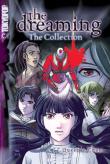 This image has been sourced from the author's website.See full AustLit entry
This image has been sourced from the author's website.See full AustLit entry"The Dreaming is a supernatural mystery story about a pair of identical twin sisters who arrive at their new private boarding school, only to find that it is haunted by something frightening and evil. Set in the remote Australian bush and using native myths as its inspiration, this ghost story is light on gore and aimed at anyone who enjoys an atmospheric story." (Source: author's website)
(...more) -
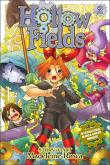 This image has been sourced from online.See full AustLit entry
This image has been sourced from online.See full AustLit entry'Little Lucy Snow was meant to be enjoying her first day at the nice elementary school in town; however a macabre twist of fate sees her enrolled instead at Miss Weaver's Academy for the Scientifically Gifted and Ethically Unfettered - also known as Hollow Fields. Located on the outskirts of Nullsville and run by the insidious Engineers, the grim boarding school dedicates itself to raising the next generation of mad scientists and evil geniuses!
'Classes include Live Taxidermy, Cross-Species Body-Part Transplantation and Killer Robot Construction, and for her own survival Lucy has to master them quickly.
(...more)Hollow Fields is a three-part steampunk manga series written and illustrated by Madeleine Rosca. The artist received a Runner-Up placement in the first International Manga Awards for her work on the Hollow Fields series. She was the only westerner to receive an award in 2007.
Hollow Fields is formatted in traditional manga style - it reads right to left, and contains extensive visual cues and sound effects.
-
The visual nature of manga has greatly appealed to readers, contributing to a growing trend amongst publishers and authors to adapt classics or other popular texts, including film, into manga. See for example Shakespeare's Romeo and Juliet by Adam Sexton and Yali Lin, or Howl's Moving Castle by British author Dianna Wynne Jones (1986), which was first adapted into an anime film (2004), and then manga (2011).
Deltora Quest is an interesting case in this adaption cycle. Published in 2000, Deltora Quest [aka Deltora Quest 1], an eight-part children's series by Emily Rodda, is still popular today with Australian and International readers. In 2007, a television, anime adaptation of the series was released in Japan and America. Episodes of the series were then published as manga, in Japanese. The Deltora manga have now been translated into English. See below for links to the AustLit work records.
-
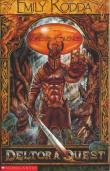 See full AustLit entry
See full AustLit entryDeltora Quest follows the adventures Lief, Barda and Jasmine as they journey across the fictitious land of Deltora, endeavoring to recover the magical belt of Deltora and defeat allies of the evil Shadow Lord.
(...more) -
 Screen cap, showing the combination of traditional animation and CGI.See full AustLit entry
Screen cap, showing the combination of traditional animation and CGI.See full AustLit entry'The evil Shadow Lord has taken over the kingdom … and only three people can save it. Lief, Jasmine and Barda have nothing in common—and everything to lose. They must embark on a perilous quest to recapture the seven lost gems of the magic Belt of Deltora. Only when the Belt is complete once more can the evil Shadow Lord be overthrown and the people of Deltora be free from tyranny'.
Source: DVD back-cover blurb (Madman Entertainment/Cartoon Network).
(...more) -
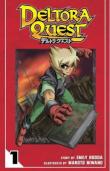 This image has been sourced from online.講談社コミックスボンボン is a series of manga publications by Kodansha (Japan) (...more)See full AustLit entry
This image has been sourced from online.講談社コミックスボンボン is a series of manga publications by Kodansha (Japan) (...more)See full AustLit entryThis manga version of Deltora Quest has been extended from 8 to 10 volumes, and is available in Japanese and English.
-
There are several ways to search for manga in AustLit:
1. A precise list of results can be achieved by clicking 'Search' from the tab menu on the homepage; clicking Form/Genre/Type on the right hand column; and selecting 'manga' from the drop-down Genre menu.
2. Alternatively, type "manga" in the search section on the top right hand side of any page. This retrieves a list of results where the word "manga" is mentioned in any context (e.g. articles, genres, titles, biographies etc.). To filter these works, use the menu on the left hand side. Under Genre for example, you can filter the children's and/or young adult works, or limit the Project Scope to Asian-Australian Children's Literature and Publishing (AACLAP).
A full list of AustLit records about children's and young adult fiction is available here.
-
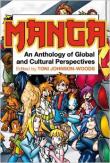 This image has been sourced from online.'Once upon a time, one had to read Japanese in order to enjoy manga. Today manga has become a global phenomenon, attracting audiences in North America, Europe, Africa, and Australia. The style has become so popular, in fact, that in the US and UK publishers are appropriating the manga style in a variety of print material, resulting in the birth of harlequin mangas which combine popular romance fiction titles with manga aesthetics. Comic publishers such as Dark Horse and Viz are translating Japanese "classics", such as Fruits Basket, into English. (...more)See full AustLit entry
This image has been sourced from online.'Once upon a time, one had to read Japanese in order to enjoy manga. Today manga has become a global phenomenon, attracting audiences in North America, Europe, Africa, and Australia. The style has become so popular, in fact, that in the US and UK publishers are appropriating the manga style in a variety of print material, resulting in the birth of harlequin mangas which combine popular romance fiction titles with manga aesthetics. Comic publishers such as Dark Horse and Viz are translating Japanese "classics", such as Fruits Basket, into English. (...more)See full AustLit entry -
-
Madman (Australia) is an independent theatrical, home entertainment distribution and rights management company, specialising in the wholesale distribution of DVD and BLU RAY product into sales channels throughout Australia and New Zealand.
It showcases collectable and special interest genres including Australian film, world cinema, TV, kids content, Anime and Manga.
Visit the site for manga available to purchase in Australia.
-
The JSC Manga Library was established in November 2002 as part of Monash University's Japanese Studies Centre and caters to both the needs of education and entertainment through the incorporation of the popular Japanese culture of Manga. It is run by volunteer staff made up of local and international students from the university.
The library is modelled on the concept of Japanese internet cafés (manga kissa), and provides a unique environment and opportunity within Melbourne to access Japanese popular culture, offering an extensive collection of over 7,000 Japanese Manga and other related texts such as magazines, novels and research material.
-
The project Crossing boundaries with Reading will engage QUT and community partners in a program of activities to promote reading and creative expression, and enhance digital literacy among high school students in a low socio-economic, culturally diverse community. The project embraces the National Year of Reading (NYR). It will benefit from a wide focus on reading, and by high profile NYR Ambassadors. Its distinctiveness and innovation lie in a partnership approach to the problem of reading/ digital literacy and a focus on Manga. The project will foster collaboration between QUT academics and students; high school students and teachers; teacher-librarians and public librarians.
The project builds on an existing close relationship between Marsden State High School and Logan City Libraries, and a flourishing Manga Club at Marsden SHS. Drawing on the popularity of digital technologies and Manga in youth culture, the project will enable Year 8 and 9 students to cross boundaries with reading in various ways designed to engage their interest and learning. Boundaries will be understood as spaces of opportunity rather than limitation.
You might be interested in...




